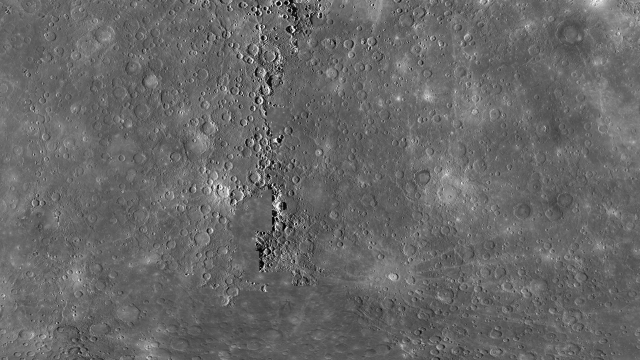A new analysis has found that Mercury has a solid inner core, just like Earth does. And Mercury’s core is just about the same size as our own planet’s.
I’m biased here, but Mercury is an incredible, mysterious planet that continues to offer exciting results to scientists. Perhaps most intriguingly, it generates its own magnetic field from the motion deep within the planet, just like the Earth.
The discovery of Mercury’s solid inner core could help scientists better understand both planets.
“An enhanced knowledge of the size of the solid inner core provides crucial information on the history of the planet’s interior and, consequently, of its magnetic field,” Antonio Genova, an assistant professor at Sapienza Università di Roma and the study’s first author, told Gizmodo in an email.
“The solidification of the core has a major role also in Earth’ interior and magnetic field evolution.”
The most recent spacecraft to study the planet up close was NASA’s MErcury Surface, Space ENvironment, GEochemistry and Ranging (MESSENGER) mission, which launched in 2004 and orbited the Mercury from 2011 to 2015.
During that mission, it took detailed measurements of the planet’s surface, gravitational field and rotation, which scientists hoped would reveal what Mercury looked like on the inside.
Most recently, scientists reanalysed the probe’s Radio Science instrument, taking into account a new technique in order to precisely determine the planet’s orbit.
This resulted in new estimates for the planet’s gravitational field, according to the paper recently published in Geophysical Research Letters. Those results demonstrated that the planet has a solid inner core that makes up around 30 to 70 per cent of the total radius of Mercury’s core.
“Mercury is now the second rocky planet — after Earth — for which we have evidence of a solid inner core,” Sean Solomon, principal investigator of the MESSENGER mission, told Gizmodo.
It’s not an exact value, but the mere presence of a solid inner core says something important — it helps scientists better understand how the planet generates its magnetic field.
On Earth, scientists attribute our own magnetic field to the dynamo, heat from the inner core combined with the planet’s spin driving motion of metal in the liquid outer core. Mercury’s interior is also cooling, as demonstrated by land forms generated by its surface contracting. The size of the solid inner core will help scientists better understand that cooling, said Solomon.
But just think about the planet compared to our own: If the solid core took up half of Mercury’s core’s radius, that’s around 1000km, according to calculations in the paper — over 40 per cent of the planet’s total radius of less than 2500km.
By contrast, Earth’s solid core is around 1200km in radius, which is less than one-fifth of our planet’s total radius of 6370km. Scientists wonder about the reasons for these differences.
Thankfully, there’s another mission on its way to the rocky inner planet called BepiColombo. Hopefully, scientists will soon solve some of Mercury’s mysteries.
